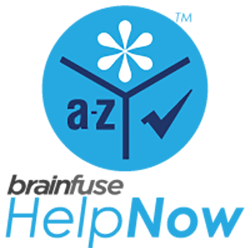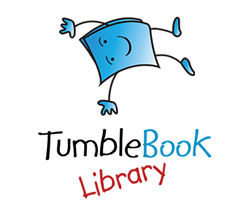Happy National Poetry Month! Every year since 1996, thanks to the tireless advocacy of the Academy of American Poets and its sponsors, we celebrate National Poetry Month and the gorgeous, challenging, mystical, resonant, oblique, playful, communal, powerful and all-around life-affirming art that is poetry.
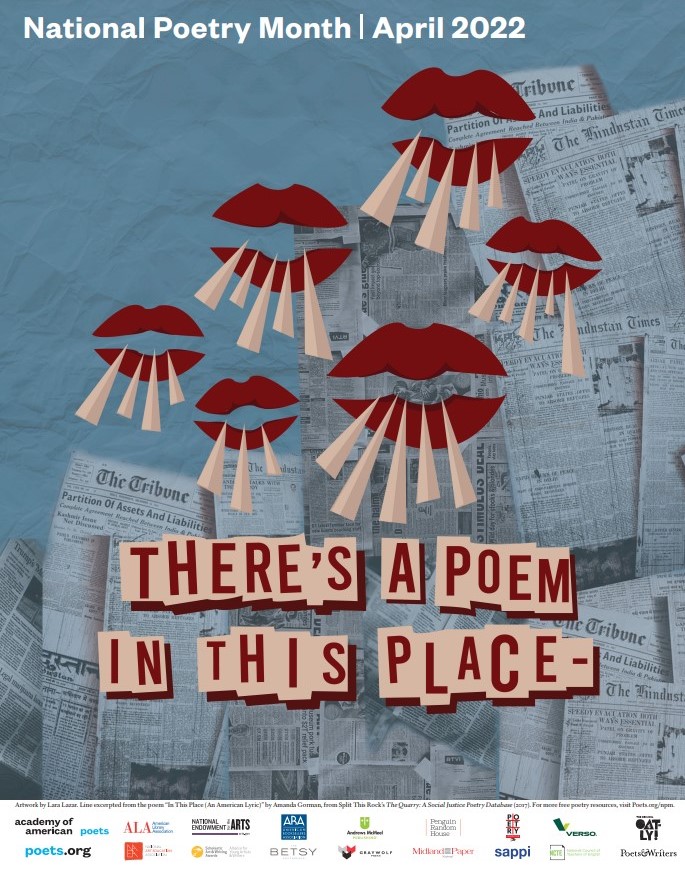
As 20th-century poet Muriel Rukeyser wrote, “If there were no poetry on any day in the world, poetry would be invented that day. For there would be an intolerable hunger.” As a lover of verse in all its forms since my earliest memories of my grandmother singing me a song of sixpence, I quite agree — so much so that I have Rukeyser’s words emblazoned across my fridge!
Whether you’re an avid reader of sonnets and pantoums or struggle to figure out what on earth a particular poem “means,” this poetry month I’d like to invite you and your family to take a dip in the proverbial shallow end of the poetry pool and create a poem-making fortune teller, or what I like to call a poem teller. First, I’d like to cite my sources: I came across the idea for this unique yet familiar poetry-craft from contemporary poet Leila Chatti, who published her own version called “Cootie Catcher” in a recent edition of POETRY Magazine. The idea is simple, yet transformative: take the paper-folding form of the cootie catcher or fortune teller, and instead of using it to predict your fortune, you can use this paper object as a compositional aid to help you write a poem!
To get started, you will need to download a poem-teller template. I’ve created two fillable pdf templates, one with sans serif font and one with serif font, to make adding in your words and phrases a bit easier:
You can add your words before or after printing out the poem-teller template. Typing the words and phrases in the fillable pdf might be easier/cleaner than writing them in by hand, but be sure to decorate your poem teller either way before folding. Refer to the color-coded key below to see where you should add particular words or phrases. For example, it might be best to save longer phrases for the largest inner eight triangles since there is the most room for writing/typing in these areas.
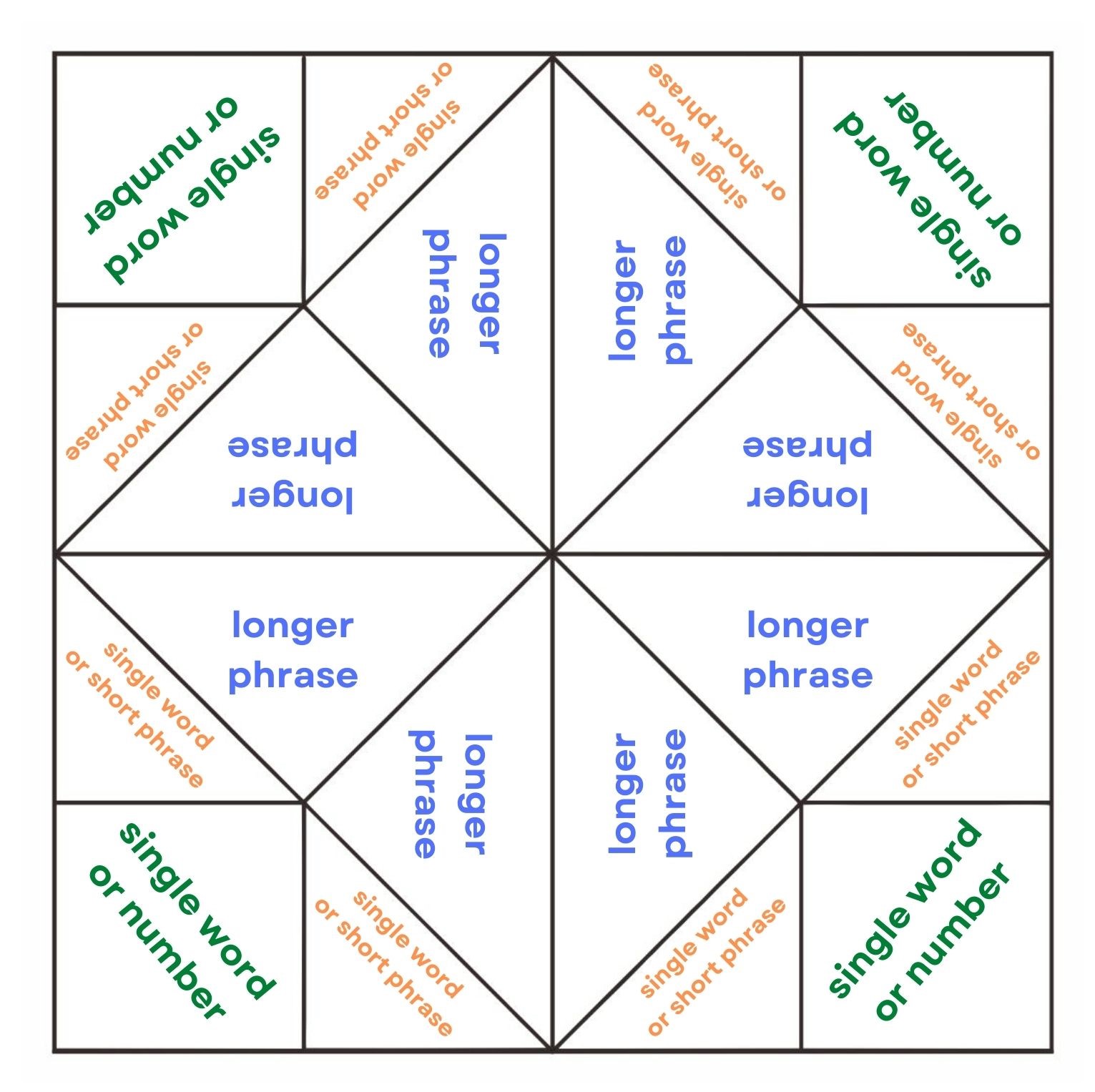 4 Outer Squares: write in a single word or number (marked in green above)
4 Outer Squares: write in a single word or number (marked in green above)
Potential ideas: You could use four different words that will become the title or subject of your poem, such as nouns like “migration” or “geode,” or verbs like “shimmer” or “move,” or gerunds (-ing words) like “quilting” or “streaming.” Or, following the traditional format of the fortune teller, you could write down four different numbers that will indicate how many lines your poem will have. I used four two-word noun phrases — “Spring Morning,” “April’s Bloom,” “Phlox Moon” and “Saturn’s Return” — to serve as titles for the poems I might create with my poem teller.
8 smaller outer triangles: write in another single word or very short phrase (marked in orange above)
Potential ideas: You could list some adjectives or adverbs to use in your poem on these triangles, or very short phrases due to the more compressed writing/typing space. I wrote down some descriptive phrases—like “blue & omnipresent” and “creaming like rust” — as well as short verb phrases like “I won’t judge it” and “I find.”
8 larger inner triangles: write in a longer phrase (marked in blue above)
Potential ideas: With the most writing/typing space, the world is your oyster in the fortune teller’s larger inner triangles. You could come up with some descriptive phrases for each of the senses, such as “tastes peachy as pie” or “smelled earthy, of tuberose and mud.” You could also write down some phrases you overhear someone saying on the TV/radio or in real life. You could even borrow a line or phrase from a favorite poem or song — just make sure to credit the original author if you plan on sharing your work! Here are some of the longer phrases I came up with: “ordinary & strange as a vulture / sunning its wings” and “it’s me who makes myself mad” (a line borrowed from a Wolf Alice song).
Once you’ve got your poem teller all filled in with words and phrases, you’re ready to print it out and start folding. First things first, after you print out your poem teller, you’ll want to cut out its basic shape. You should have a large square with 4 smaller squares, 8 smaller triangles and 8 larger triangles inside of it.

Next, you’ll want to fold along the larger square’s central lines, folding both vertically and horizontally. (This step helps by making the paper a bit more flexible and will give you guidelines when you turn your paper over for the next folding steps.)
Unfold your paper so it is flat but creased both vertically and horizontally in the middle, then turn it over so none of the black lines demarcating the other shapes within the larger square are showing. Fold each of the four outer corners of the square into the center so that the outer edges meet at the center of your poem teller.

You should now have another smaller square. (On the outer edges should be the eight smaller triangles for single words or very short phrases, and in the center should be a diamond or rotated square composed of the four smaller squares for single words or numbers.) Turn this smaller square over to reveal the eight larger triangles for longer phrases, then fold each of the square’s corners to the center, similar to the folding you did in the previous step.
 You should now have a small diamond/rotated square made up of the eight smaller triangles for single words or very short phrases. Fold along the center lines of this diamond/rotated square, first vertically and then horizontally. Leave the square folded along the center horizontal line. You should end up with a small rectangle composed of two squares for single words or numbers on each side.
You should now have a small diamond/rotated square made up of the eight smaller triangles for single words or very short phrases. Fold along the center lines of this diamond/rotated square, first vertically and then horizontally. Leave the square folded along the center horizontal line. You should end up with a small rectangle composed of two squares for single words or numbers on each side.
 You’re ready to pinch your poem teller into shape! Place your forefingers and thumbs underneath the outer squares; they should open up like flaps.
You’re ready to pinch your poem teller into shape! Place your forefingers and thumbs underneath the outer squares; they should open up like flaps.
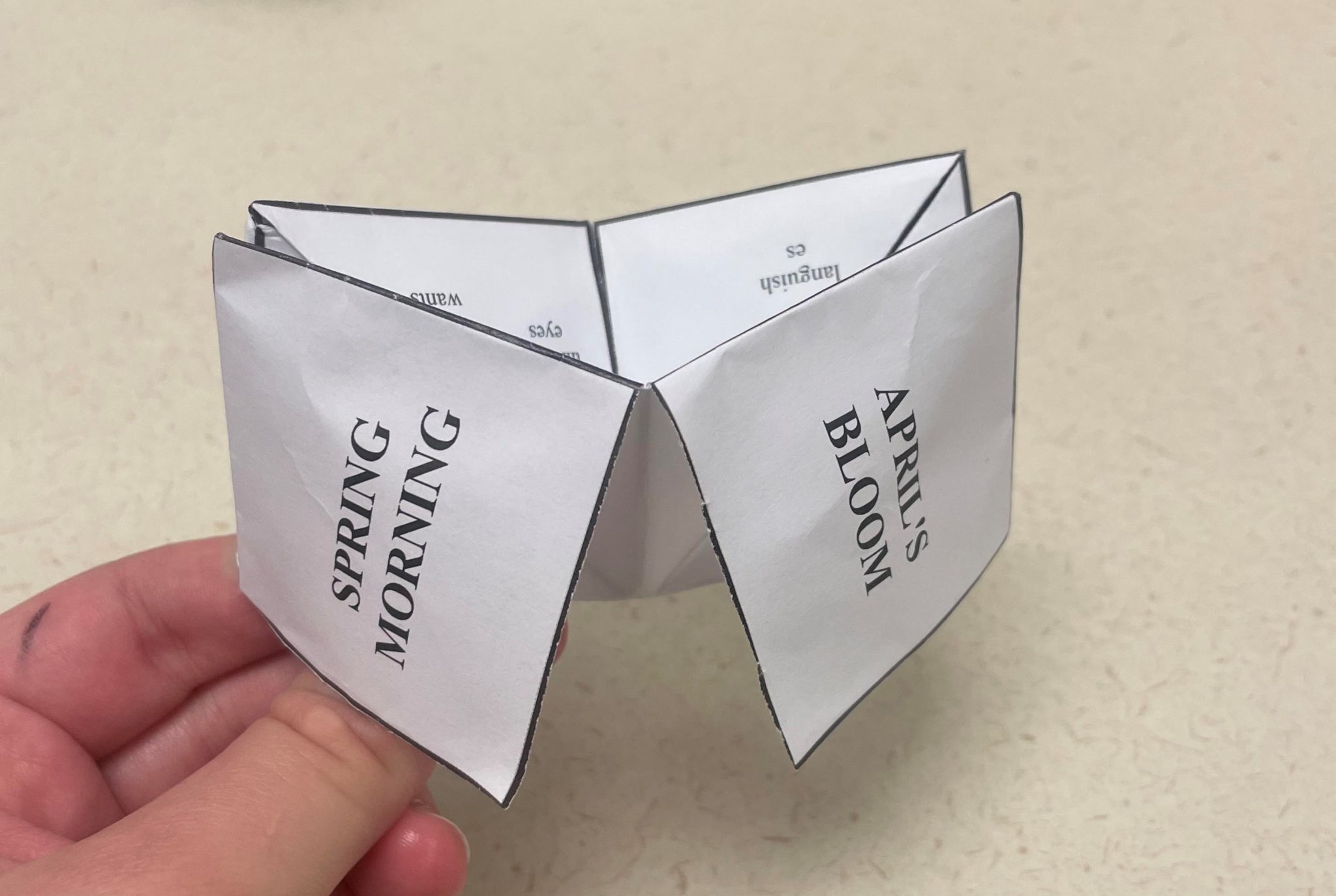
With your fingers and thumbs underneath the flaps, pinch your poem teller into a flower or mouth shape by pulling up and inward slightly, fully inflating the flaps. Be careful not to use too much pressure, or you might rip your poem teller. All of your folds should help you pinch the poem teller into its final shape.
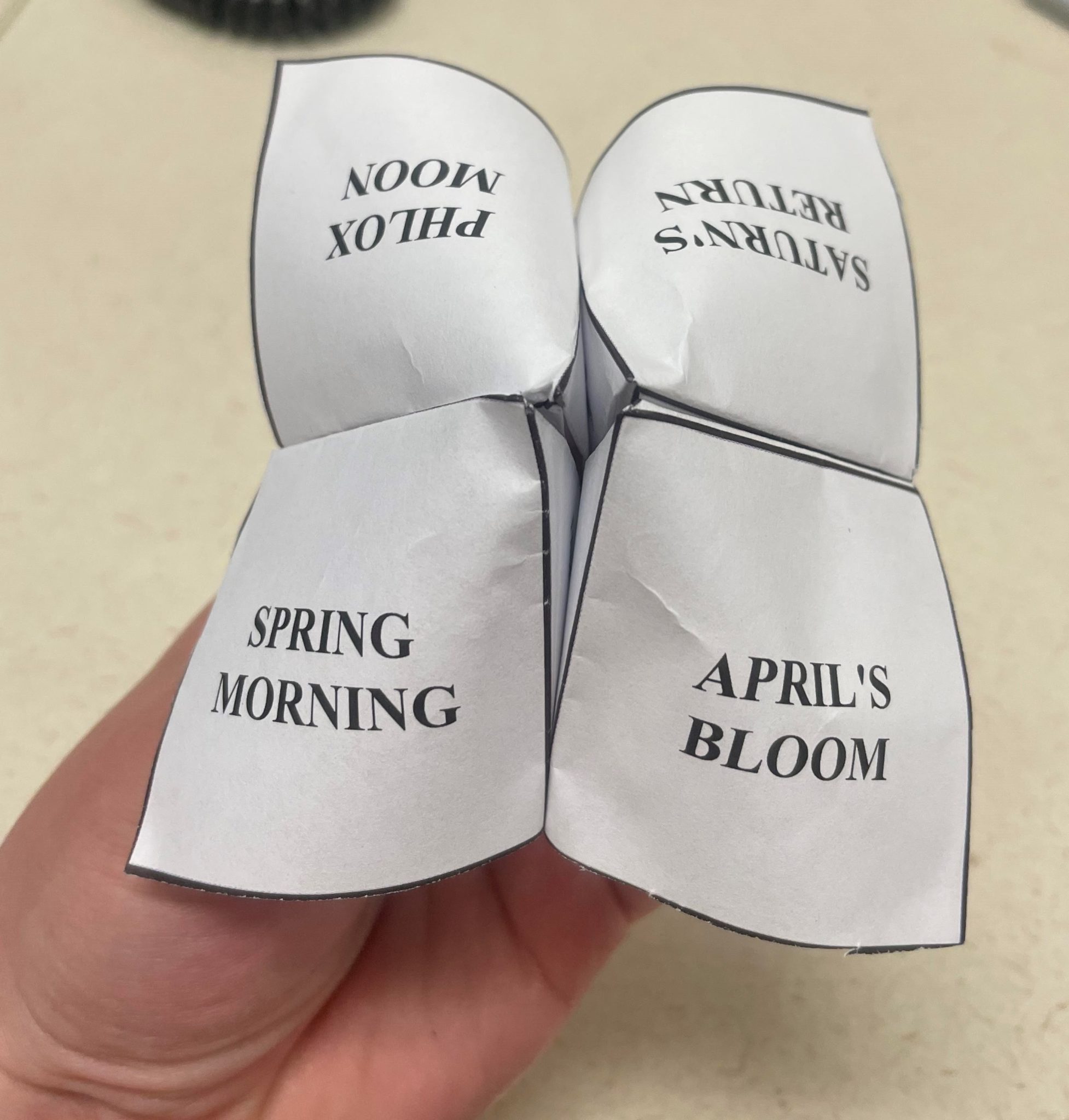
Your poem teller is ready to help you write some poems! Enjoy alone or with a friend as you celebrate National Poetry Month. As a bonus, here’s a short poem I created with my poem teller:
SATURN’S RETURN
I won’t judge it
ordinary & strange as a vulture
sunning its wings one
spring morning. Beyond the tree-line’s
rippling obscurity, a shade
coming through the rye: April’s bloom
creaming like rust.



